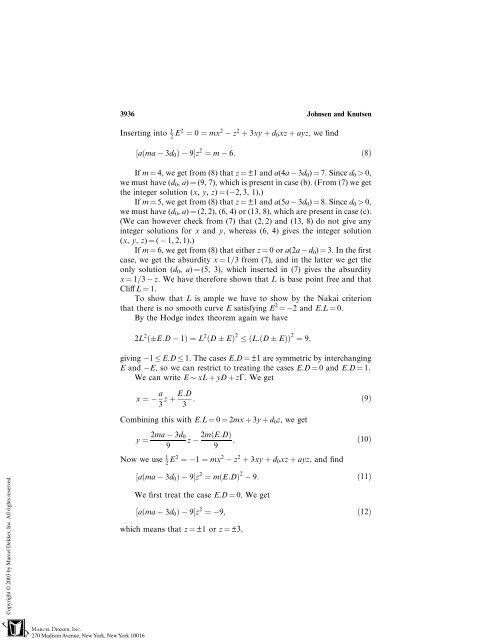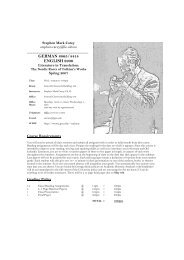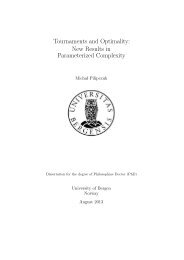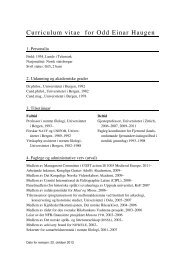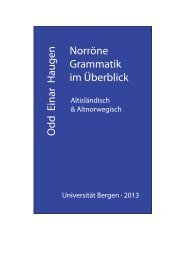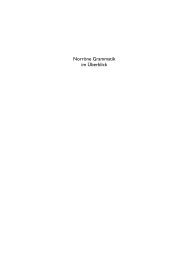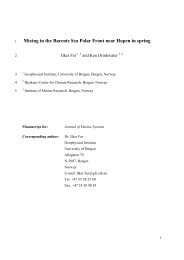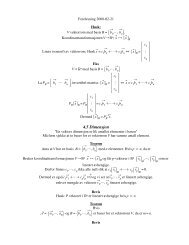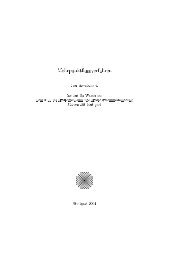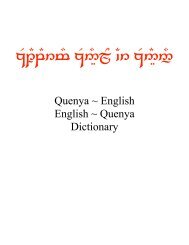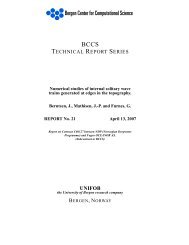Rational Curves in Calabi-Yau Threefolds
Rational Curves in Calabi-Yau Threefolds
Rational Curves in Calabi-Yau Threefolds
Create successful ePaper yourself
Turn your PDF publications into a flip-book with our unique Google optimized e-Paper software.
3936 Johnsen and Knutsen<br />
Insert<strong>in</strong>g <strong>in</strong>to 1<br />
2 E2 ¼ 0 ¼ mx 2 z 2 þ 3xy þ d0xz þ ayz, we f<strong>in</strong>d<br />
½aðma 3d0Þ 9Šz 2 ¼ m 6: ð8Þ<br />
If m ¼ 4, we get from (8) that z ¼ ±1 and a(4a 3d0) ¼ 7. S<strong>in</strong>ce d0 > 0,<br />
we must have (d0, a) ¼ (9, 7), which is present <strong>in</strong> case (b). (From (7) we get<br />
the <strong>in</strong>teger solution (x, y, z) ¼ ( 2, 3, 1).)<br />
If m ¼ 5, we get from (8) that z ¼ ±1 and a(5a 3d0) ¼ 8. S<strong>in</strong>ce d0 > 0,<br />
we must have (d 0, a) ¼ (2, 2), (6, 4) or (13, 8), which are present <strong>in</strong> case (c).<br />
(We can however check from (7) that (2, 2) and (13, 8) do not give any<br />
<strong>in</strong>teger solutions for x and y, whereas (6, 4) gives the <strong>in</strong>teger solution<br />
(x, y, z) ¼ ( 1, 2, 1).)<br />
If m ¼ 6, we get from (8) that either z ¼ 0ora(2a d0) ¼ 3. In the first<br />
case, we get the absurdity x ¼ 1=3 from (7), and <strong>in</strong> the latter we get the<br />
only solution (d0, a) ¼ (5, 3), which <strong>in</strong>serted <strong>in</strong> (7) gives the absurdity<br />
x ¼ 1=3 z. We have therefore shown that L is base po<strong>in</strong>t free and that<br />
Cliff L ¼ 1.<br />
To show that L is ample we have to show by the Nakai criterion<br />
that there is no smooth curve E satisfy<strong>in</strong>g E 2 ¼ 2 and E.L ¼ 0.<br />
By the Hodge <strong>in</strong>dex theorem aga<strong>in</strong> we have<br />
2L 2 ð E:D 1Þ ¼L 2 ðD EÞ 2<br />
ðL:ðD EÞÞ 2 ¼ 9;<br />
giv<strong>in</strong>g 1 E.D 1. The cases E.D ¼ ±1 are symmetric by <strong>in</strong>terchang<strong>in</strong>g<br />
E and E, so we can restrict to treat<strong>in</strong>g the cases E.D ¼ 0 and E.D ¼ 1.<br />
We can write E xL þ yD þ zG. We get<br />
x ¼ a E:D<br />
z þ : ð9Þ<br />
3 3<br />
Comb<strong>in</strong><strong>in</strong>g this with E.L ¼ 0 ¼ 2mx þ 3y þ d0z, we get<br />
y ¼<br />
2ma 3d0<br />
z<br />
9<br />
2mðE:DÞ<br />
:<br />
9<br />
Now we use 1 2 E2 ¼ 1 ¼ mx 2 z 2 þ 3xy þ d0xz þ ayz, and f<strong>in</strong>d<br />
½aðma 3d0Þ 9Šz 2 ¼ mðE:DÞ 2<br />
We first treat the case E.D ¼ 0. We get<br />
ð10Þ<br />
9: ð11Þ<br />
½aðma 3d0Þ 9Šz 2 ¼ 9; ð12Þ<br />
which means that z ¼ ±1 or z ¼ ±3.


